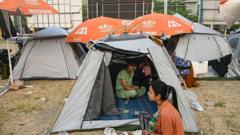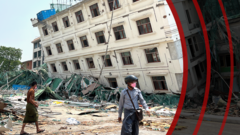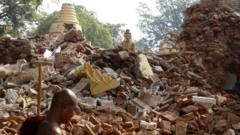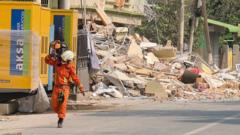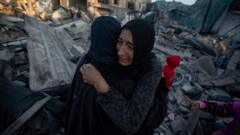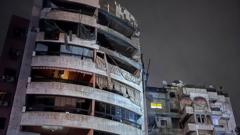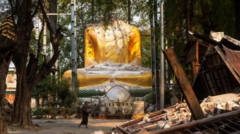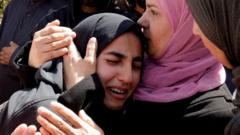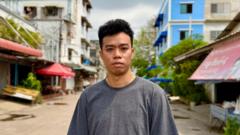The recent 7.7 magnitude earthquake near Mandalay has led to mounting casualties and widespread devastation, with bodies piling up and inadequate infrastructure complicating relief efforts. Survivors face dire shortages of food and water amidst an ongoing civil strife that hinders assistance access.
Mandalay's Tragedy: Death and Despair Follow Devastating Earthquake
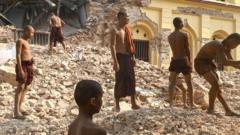
Mandalay's Tragedy: Death and Despair Follow Devastating Earthquake
As Mandalay reels from a catastrophic earthquake, a desperate humanitarian crisis unfolds, highlighting governmental challenges and profound community grief.
Mandalay, once celebrated as the 'city of gold' adorned with shimmering pagodas and lush spiritual sites, now finds itself cloaked in sorrow and death following a catastrophic 7.7 magnitude earthquake last Friday. The calamity has left the city grappling with the grim aftermath, as the death toll has surged past 2,700 and officials warn of possibly higher figures, with numbers expected to escalate as rescue efforts continue in a region characterized by poor infrastructure and prolonged civil conflict.
Residents describe a heartbreaking scene, with many having had to "cremate bodies in stacks" amidst dwindling resources. A local student, recounting her traumatic experience, revealed how her aunt's body was only recovered two days after the quake. “We lost so much,” she said, reflecting the despair felt by many who roam the streets in search of missing loved ones and basic supplies, including food and clean water.
The difficult landscape for relief efforts is compounded by the Myanmar military's history of repressing information about national calamities. Families have been forced to seek refuge outdoors, fearing further aftershocks may endanger the remaining structure of their homes. Although rescue teams have reportedly saved 403 individuals over the last few days, survivors speculate that the true casualty numbers are far greater than those acknowledged by authorities.
Children have been particularly traumatized by the disaster, with reports of emotional distress evident in young survivors who grapple with witnessing the destruction of their communities. A local resident, Ruate, expressed the emotional toll of the tragedy, stating, “Everyone's just gotten so tired. We are feeling hopeless and helpless,” illustrating the compounded weight of prior natural and human-made disasters that have struck Myanmar in recent years.
Despite the overwhelming nature of the devastation, there are reports of individuals still being rescued from the rubble. Yet the situation remains dire, as local crematoriums and first responders indicate that they are overwhelmed and running low on essential supplies including body bags. The enduring impact of poverty exacerbated by the recent upheaval casts a long shadow over the city, which was once a thriving center for gold production and tourism.
In a national display of mourning, Myanmar held a moment of silence for the victims on Tuesday, with junta leaders urging citizens to reflect on the loss. Prior to the earthquake, more than 3.5 million individuals were already displaced within Myanmar, and with an exodus of young people fleeing conscription, there remains a critical shortage of aid workers engaged in relief and rebuilding efforts.
As the international community, including nations like Russia and China, extends help, humanitarian groups face challenges in accessing quake-affected areas due to military-imposed restrictions which require detailed reporting of aid activities. Human Rights Watch has criticized the military for hindering assistance even amid such pressing humanitarian needs.
As conflict continues to simmer in Myanmar, with reports emerging of ongoing military actions against civil resistance groups, the risk of a prolonged humanitarian crisis looms. The People's Defence Forces have announced a ceasefire to prioritize relief efforts, underscoring the need for stability and cooperation among differing factions to address the immense human suffering stemming from this disaster.

